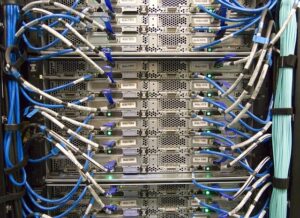The Average Size of the Server Room

it is very common in many communities related to IT for the server room to have a very small area, more than a few hundred feet from one direction to the other. When they get bigger than that, and they are housing a substantial amount of equipment, these are referred to as data centres. Technically speaking, you can have any server room, of any size, per your designation.
The shape of the server room is also not important. There are situations where you may need to have more space for desks, print shops, or even storage. It is due to the layout, which is completely nonstandard, that you can configure it in any way that you see fit. The reason that planning is so important is that you want to have proper airflow, as well as proper cooling, throughout the entire room.
Unique Aspects Of The Design Of The Server Room
When designing a server room, you need to take into account the equipment that you are going to use come the computer servers, and you will likely have a specific configuration for them in that limited space. In some cases, you may want to have this in a location far from the rest of your equipment, or it may just be that you have limited space. You can keep everything operating properly, even out of what is referred to as a computer closet.
When you do upgrades of any kind, or if you configure the design differently, there are certain set-up considerations. If you are looking for a new room in which to put your server, you can avoid problems with proper planning. All of these should have some type of design aspect that follows the configuration of typical technical equipment that is used:
Precision Environmental Control – there should always be sensors that are able to monitor the level of humidity and temperature of the room. These environmental controls can cover the entire room at all times.
Airflow Planning – there is going to be a substantial amount of heat that is produced when you are running this type of equipment. That is why you must identify areas where hotspots can show up in order to prevent damage from occurring.
Fire Suppression System – if there is a fire, you need to have access to water. However, this can be disastrous as it can ruin all of your equipment. Although there are limited options, you may want to consider the FM 200 systems or even the Novec systems which have become very popular. These can easily extinguish fires and not ruin computer equipment.
Cable Management Solutions – if you are going to be running miles of cable, you need to also think about the server room itself. When you are doing your design, running the wires to the floor and ceiling, can be somewhat problematic in a smaller space.
Redundant Our Sources – it is vitally important to always have access to redundant power systems which will prevent downtime, and it can also help with the damage that could be caused by power surges which may affect this room in particular.
Search data centre design services to see results.
Physical Security – in some cases, you can have as much as several million dollars in equipment in that one particular room. Additionally, all of the data that you are using is likely invaluable and not replaceable. You should have a physical security presence at your facility to make sure everything is safe.
DMARK Location – Finally, server rooms are to have multiple data systems coming in and out of the room. If this occurs, you need to consider the telco’s responsibility, as well as the DMARK location or point which is vital for running your business safely.
